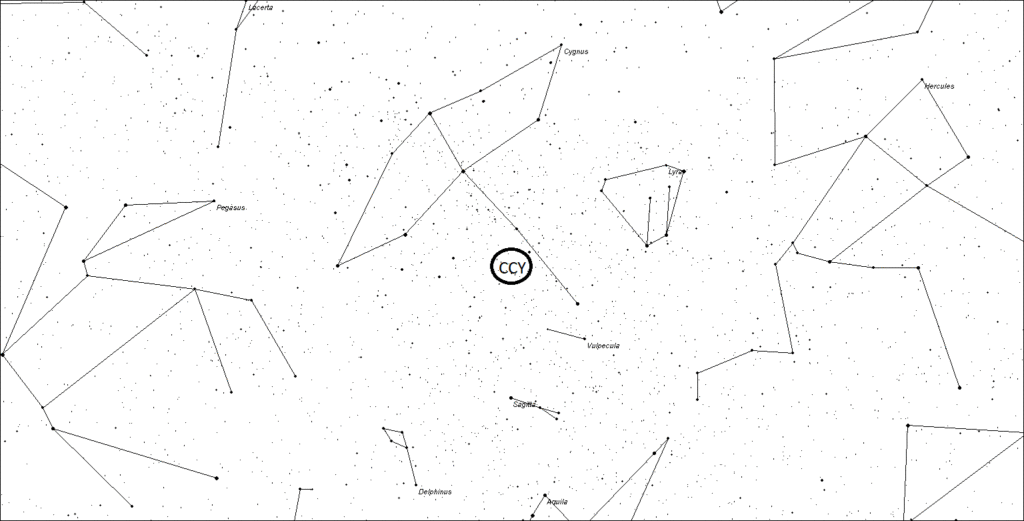In September 2015, several video systems picked up activity from a previously unknown radiant in Cygnus. Low activity was evident most of the month with a weak peak occurring on September 14/15. We have publicized this source since then, but activity has been next to nothing. In August 2020, cameras of the CAMS system in the southern hemisphere picked up activity from a radiant near the borders of Delphinus and Aquila. Upon further investigation of these meteors by Dr. Peter Jenniskens, he has determined that these meteors are early members of the chi Cygnids. If this is true, then the activity seen near mid-September may be enhanced.
The moon is currently waning in the morning sky and will reach its new phase on September 17. Since these meteors are best seen during the evening hours, there will be no interference from moonlight during this time. During this period, the radiant traverses southern Cygnus and peaks at a position 3 degrees southeast of the variable star chi Cygni. An easier method of locating the radiant near maximum would be to draw an imaginary line from the bright stars Albireo (beta Cygni) to Aljanah (epsilon Cygni). The radiant at maximum lies just short of the half-way point of this line at maximum.

Peak activity is predicted any time from September 13-15. Observations can start as soon as it becomes sufficiently dark. The radiant will be located highest in the sky between the hours of 21-22 local summer time. The radiant will then slowly set into the northwestern quadrant of the sky, still maintaining an altitude in excess of 30 degrees most of the night.
To best see these meteors, it is suggested that you view approximately half-way up in the sky with the radiant located near the edge of your field of view. This way one can examine any meteors seen to see if they trace back to the radiant in Cygnus. Choose a direction that is the darkest without trees or other obstacles to block your view. If first facing eastward early in the evening you may wish to change directions once the radiant has left your field of view.
It should be noted that most meteor activity is expected to be random and not members of the chi Cygnids. The International Meteor Organization has a visual meteor form available on their website (free registration required). Your observations will help us advance our knowledge of these obscure meteor showers!
REFERENCES:
Jenniskens P. (2015). “Possible upcoming return of the chi Cygnids in September 2020”. MeteorNews https://www.meteornews.net/2020/08/27/possible-upcoming-return-of-the-chi-cygnids-in-september-2020/ Accessed 8 September 2020




 You saw something bright and fast? Like a huge shooting star? Report it: it may be a fireball.
You saw something bright and fast? Like a huge shooting star? Report it: it may be a fireball.  You counted meteors last night? Share your results with us!
You counted meteors last night? Share your results with us!  You took a photo of a meteor or fireball? You have a screenshot of your cam? Share it with us!
You took a photo of a meteor or fireball? You have a screenshot of your cam? Share it with us!  You caught a meteor or fireball on video? Share your video with us!
You caught a meteor or fireball on video? Share your video with us!